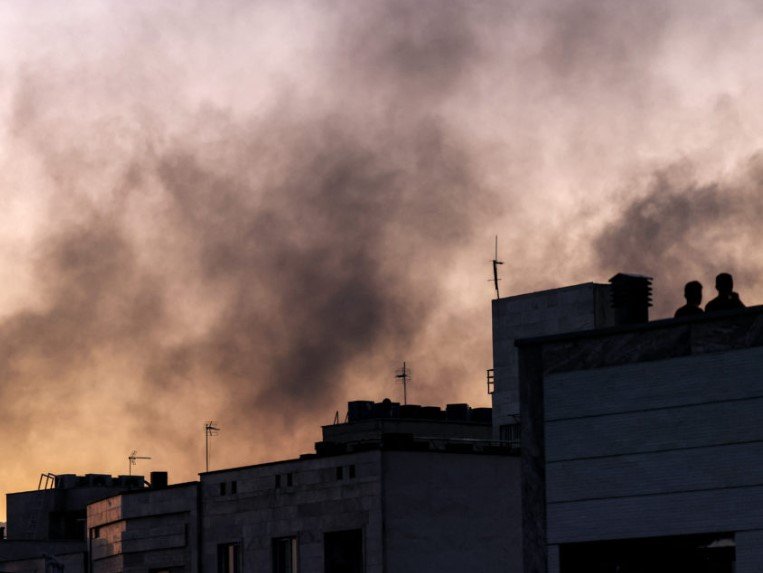Fearing Nightfall, Locals Sleep in Subways and Carparks to Escape Iranian Missiles
As sirens scream and missiles light up the sky, hundreds of Tel Aviv residents are now spending their nights beneath ground level — in metro stations and carparks — where fear is muffled by concrete and community.
Since the war between Israel and Iran erupted on June 13, many residents of the bustling coastal city have turned to the city’s transit infrastructure not for travel, but for survival. And night after night, they’ve made the same heartbreaking choice: abandon their homes to sleep on public floors with strangers rather than risk the silence above.
Shelters Without Walls, But Full of Resolve
When dusk arrives in Tel Aviv these days, people begin to pack. Not for vacation or work — but for war. For Muriel Azria, 58, a tourism worker from northern Tel Aviv, her new nightly ritual starts with a suitcase and ends with a mattress on a metro platform.
“There was a bomb near my house the day after Israel hit Iran,” she said, sitting beside her dog in one of the metro stations now doubling as an emergency shelter. “The shelter shook. The next night, I didn’t wait. I came here.”
Her mattress is council-provided, laid neatly beside others on the concrete. People bring what they can — blankets, snacks, books, even cards. It’s not a home, but it’s a space where fear doesn’t echo quite as loud.

The New Normal of Alert Pings and Midnight Scrambles
If it isn’t the distant booms, it’s the phones that jolt people awake. Residents get SMS alerts when Iranian missiles are inbound — sometimes with just seconds to spare.
The sequence is now painfully familiar: a phone buzzes, a siren wails, and people scramble to descend. For those with no shelters at home — often older buildings or low-income areas — the subway is the best option.
It’s become routine for many:
-
Pack a small bag before dark.
-
Bring water, medication, a flashlight.
-
Find space underground.
-
Try to sleep while others play crosswords or chat about the news.
“It’s Too Much”: Elderly Pay the Price in Exhaustion
Yudit Kamara is 86. She doesn’t complain, but you can hear the fatigue in her voice. “I don’t have a shelter at home,” she said quietly, clutching a plastic bag of essentials. “It’s too much. I don’t have the strength anymore to go through this.”
Each evening she makes her way slowly to the underground. No matter how tired, she can’t risk staying above.
One evening last week, she fainted from exhaustion while waiting in line to get into a carpark shelter. A volunteer helped her sit down and gave her water. “It’s not how I imagined growing old,” she whispered.
The Metro Platform That Became a Micro-Neighborhood
Every night the station changes. In the beginning, it was chaos — no one knew what to bring, where to go, how long they’d stay. But over the last 12 days, something resembling order has emerged.
Some regulars have staked out favorite spots. There’s a woman with two toddlers who always sets up near the benches. A man who brings a chessboard. Teenagers who scroll Instagram beside a power bank charging hub.
For a few hours, the platform becomes a neighborhood. Unlikely friendships have sparked. Volunteers drop off sandwiches and blankets. Someone even handed out earplugs one night.
Tensions Above Ground, Camaraderie Below
The emotional contrast between the surface and underground is stark.
Above ground, streets are emptier than usual. Restaurants close early. Parents keep kids close. Everyone glances at the sky when there’s a loud noise.
Below, it’s somehow lighter — not in mood, but in spirit. There’s conversation. Laughter, even. Muriel calls it a “weird form of peace.” She adds, “The fear is still there. But it’s shared.”
No Sirens for the Soul
What’s striking isn’t just the resilience — it’s the weariness.
Israel’s Iron Dome has intercepted many missiles, but the psychological toll is harder to defend against. Some people haven’t slept properly in a week. Others, like Yudit, say they’ve lost weight from the stress.
There are no statistics yet on the number of Tel Avivians sheltering underground, but city officials estimate thousands are cycling through public shelters each night — including schools, garages, and metro stations.
A City Below a City, A Night That Never Ends
Here’s a quick look at how people are adapting across key shelter types:
| Location Type | Shelter Use (Estimated People/Night) | Key Concerns |
|---|---|---|
| Metro Stations | 1,500–2,000 | Limited beds, no privacy |
| Underground Carparks | 700–1,000 | Poor ventilation, safety risks |
| Community Centers | 300–500 | Overcrowded, no formal restrooms |
And yet, people return every night. Because there’s no better option.
The Human Soundtrack of War
You won’t find much news coverage of what people talk about underground. But it’s worth noting.
They talk about the war, of course. Whether Iran will respond again. Whether Trump can broker a real ceasefire. Whether the IDF went too far or not far enough.
But they also talk about things that make them feel normal. Someone complained about how bad the instant coffee is. Someone else said they miss their cat who won’t leave the apartment. One woman celebrated her birthday last week underground with a Twinkie and a song.
